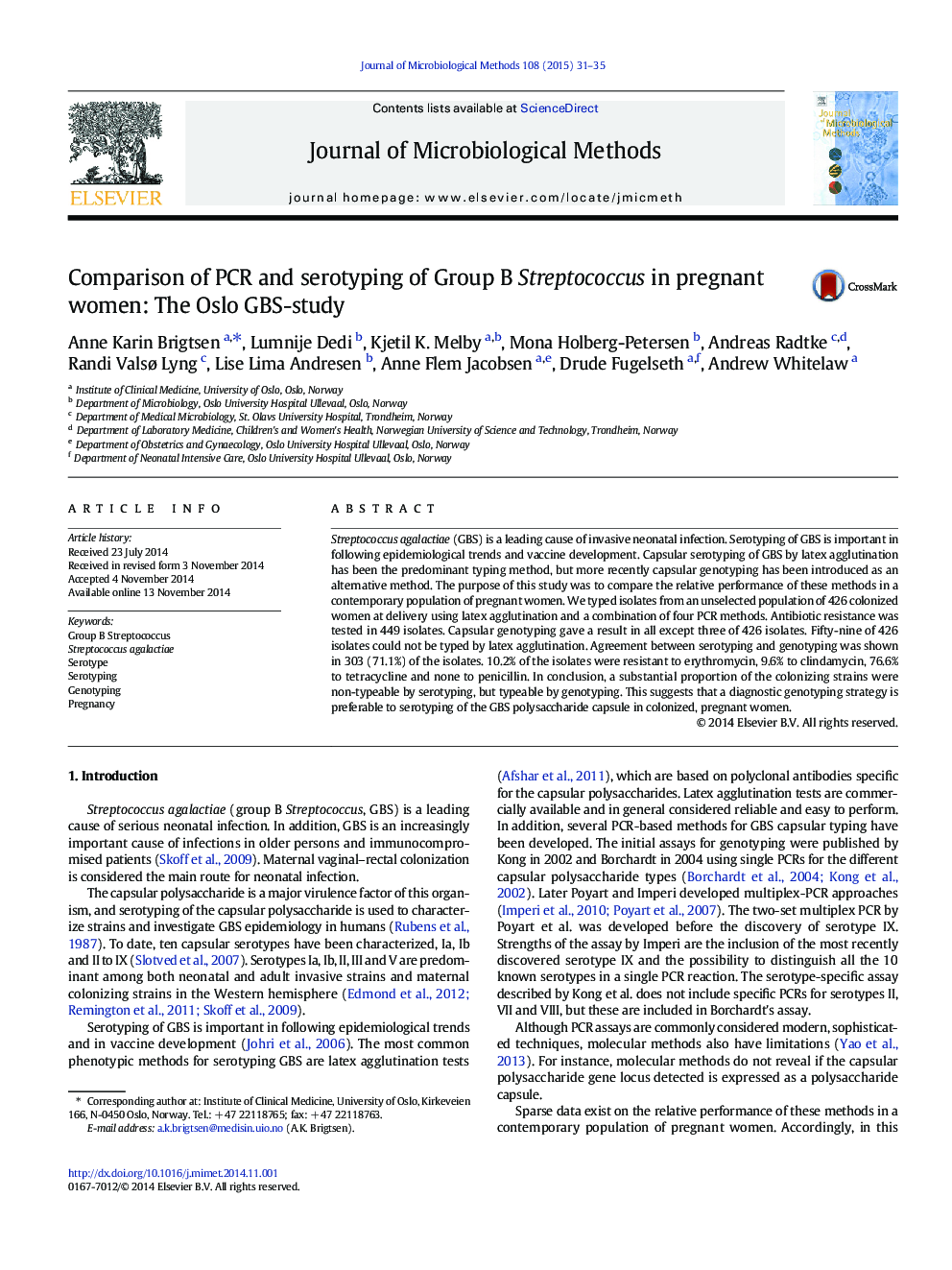| Article ID | Journal | Published Year | Pages | File Type |
|---|---|---|---|---|
| 2089914 | Journal of Microbiological Methods | 2015 | 5 Pages |
•GBS serotyping and PCR genotyping were compared in unselected, pregnant women.•A combination of 4 PCR assays was used.•PCR identified a substantial higher proportion of the colonizing strains.•Agreement between serotyping and genotyping was shown in 71% of the isolates.
Streptococcus agalactiae (GBS) is a leading cause of invasive neonatal infection. Serotyping of GBS is important in following epidemiological trends and vaccine development. Capsular serotyping of GBS by latex agglutination has been the predominant typing method, but more recently capsular genotyping has been introduced as an alternative method. The purpose of this study was to compare the relative performance of these methods in a contemporary population of pregnant women. We typed isolates from an unselected population of 426 colonized women at delivery using latex agglutination and a combination of four PCR methods. Antibiotic resistance was tested in 449 isolates. Capsular genotyping gave a result in all except three of 426 isolates. Fifty-nine of 426 isolates could not be typed by latex agglutination. Agreement between serotyping and genotyping was shown in 303 (71.1%) of the isolates. 10.2% of the isolates were resistant to erythromycin, 9.6% to clindamycin, 76.6% to tetracycline and none to penicillin. In conclusion, a substantial proportion of the colonizing strains were non-typeable by serotyping, but typeable by genotyping. This suggests that a diagnostic genotyping strategy is preferable to serotyping of the GBS polysaccharide capsule in colonized, pregnant women.
